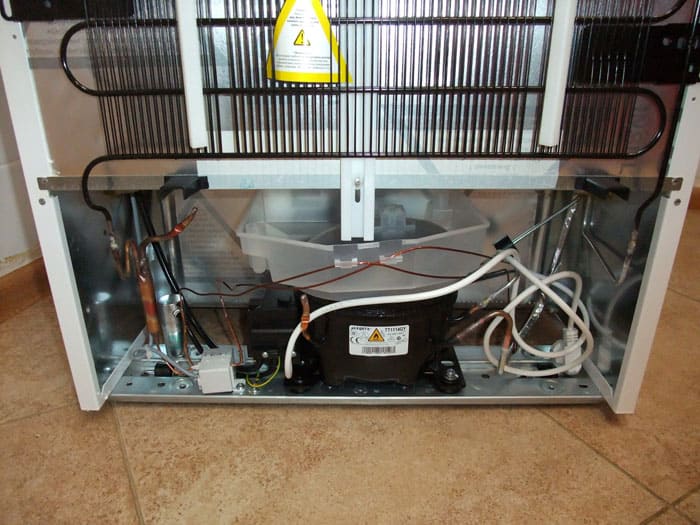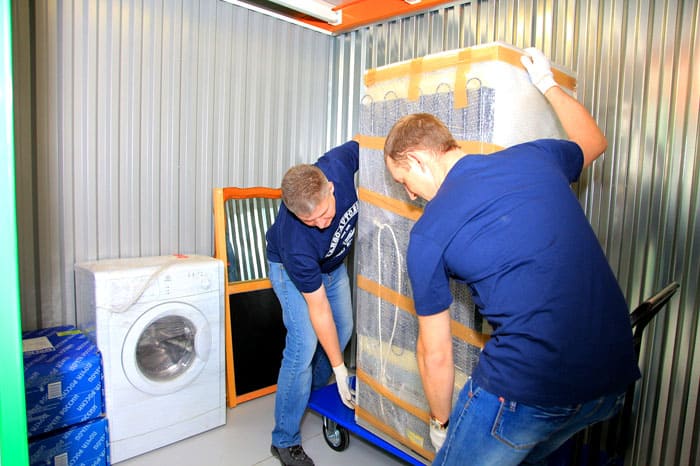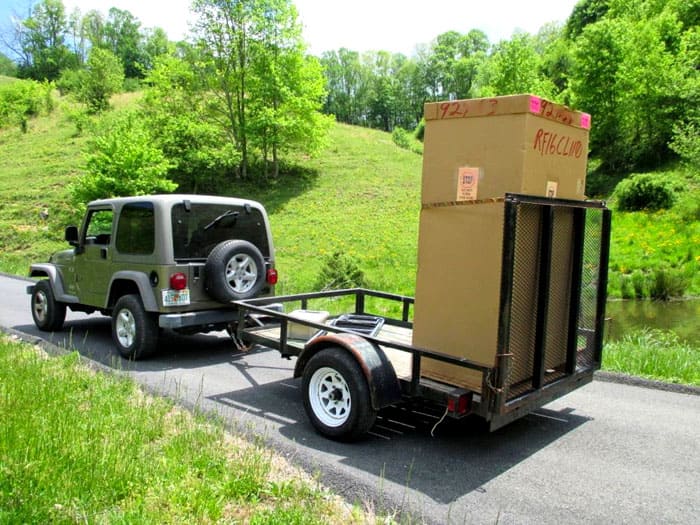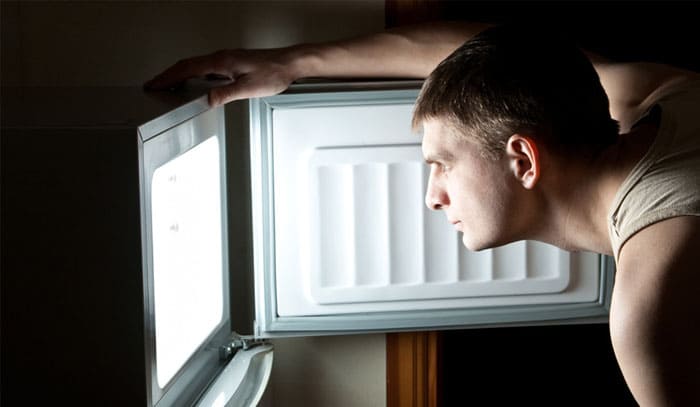Is it possible to transport the refrigerator lying down, and how to solve this problem correctly
There can be many reasons for transporting the refrigerator yourself: you are trying to save money on delivery services, or you are moving to a new home, or maybe you are going to send it to your country house. In any case, in case of improper transportation, the unit can be damaged so much that it will be easier to send it to landfill than to restore it. How to prevent such a collapse and is it possible to transport the refrigerator lying down - in the material from homemaster.techinfolux.com/en/.
The content of the article
- 1 How best to transport the refrigerator: lying, leaning or standing
- 2 Is it possible to transport refrigerators in a lying position, and if not, why
- 3 Transportation of the refrigerator lying: on which side it is possible, if it is in its original packaging
- 4 Preparing the refrigerator for transportation
- 5 How to find out by the position of the freon outlet tube if it is possible to transport the refrigerator while lying on its side
- 6 Can refrigerators be transported lying on the door
- 7 Correct packing of the unit for transport
- 8 How to properly transport refrigerators on the road - recommendations of our editorial staff
- 9 How long can refrigerators be turned on after transportation and how it should be done
- 10 Summary: is it possible to transport the refrigerator lying
- 11 Video: how to transport a refrigerator over long distances
How best to transport the refrigerator: lying, leaning or standing
Not knowing the nuances of the device of this unit, you would not even think that, in fact, this colossus is very afraid of transportation. Box and box, what's so difficult? And why do all the instructions say that the transportation of the refrigerator is possible only in an upright state and no other? Can the refrigerator be transported simply lying in the trunk of a car?

But it is not so easy to accomplish this task: some models of refrigerating cabinets are two meters high. They are not easy to install in a trailer or pickup truck.
Take your time to dismiss the instructions: they are written from bitter experience. If you carefully study the design of the unit, then, in principle, you can find a position that will allow you to place it on the side or carry it in an inclined form.
Is it possible to transport refrigerators in a lying position, and if not, why
In every home appliance store there are specially trained people who will answer your question: why you can't transport the refrigerator lying down. Moreover, they will happily agree to solve this problem for a reasonable fee.

Experts will properly pack your treasure and take it wherever you want, in a special car with high sides
But since you are not looking for easy ways, then start by studying the device of the unit in order to independently find a solution to this problem. Let's try to do this together.
Transportation of the refrigerator lying: on which side it is possible, if it is in its original packaging
The main cause of all possible troubles is incorrect determination of the horizontal position of refrigerators during transportation. Keep in mind that transporting the refrigerator lying down, with an inclination of more than forty degrees, may cause the manufacturer to refuse from warranty obligations.
How to find the correct position? And, in principle, is it possible to transport refrigerators in a horizontal position at all? If the model is old, then the compressor in it is at the back wall. It is placed in a container with machine oil. When laying the unit, the oil is mixed with freon. This is a verdict for the entire cooling system. The oil gets into the tubes where the freon should be and clogs them.
The next malfunction that may arise during transportation is the failure of spring shock absorbers, the task of which is to reduce vibration during the operation of the unit.
And finally, the tubes of the refrigerant grill themselves may suffer during transportation.
All these circumstances are the reason why, under no circumstances, it is impossible to transport the units lying on the back wall, but there is an option of how to transport refrigerators lying on their side.
Preparing the refrigerator for transportation
The sides and location of its main components are always marked on the original packaging of the unit. This greatly simplifies the transport task, because a safe position can be easily determined.
If you have an old refrigerator and you managed to keep the packaging, use it. If not, you will have to build your own packaging from scrap materials. Old blankets, pieces of foam rubber, or something similar can be used.
But before you wrap the household appliance in "clothes", find and remember the position of the refrigerant tube relative to the compressor.
How to find out by the position of the freon outlet tube if it is possible to transport the refrigerator while lying on its side
Freon circulates through the cooling system as follows: from the compressor in gaseous form, it goes to the condenser and becomes liquid there. It gives off warmth along the way. If you gently feel the tubes at the back, one of them will be hot. If you are forced to lay the refrigerator, then this tube must be directed upwards.

In some devices, outgoing and incoming pipes are placed on one side - then there is no need to look for an exit
Can refrigerators be transported lying on the door
The answer is very simple: no, this household appliance cannot be transported on the door. The reason is obvious - you damage the handle, plus everything, you risk a noticeable part of the facade, the damage on which will immediately catch your eye.
Correct packing of the unit for transport
The preparation of the refrigerator for transportation must be thorough, because the safety of the device directly depends on it:
- you need to disconnect the unit from the network and dry it for several hours;
- Remove all shelves and drawers from the refrigerator. All this is packed separately. If there are parts that cannot be removed, they should be fixed as securely as possible so that they do not break when vibrated;
- it is necessary to secure the compressor by tightening all the bolts as tight as possible. It is permissible to add pieces of cardboard and construction foam for reliability;
- fix the doors with adhesive tape (better with painting tape, stationery can leave traces), tie belts or ropes.
A refrigerated cabinet packed according to these rules should survive all the difficulties of moving in complete safety.
How to properly transport refrigerators on the road - recommendations of our editorial staff
And now about how to properly transport the refrigerator while lying. First of all, remember that no matter how strong the door is, and no matter how you securely fasten it, it is better not to hold on to it when loading. The handle may break off and the hinges may bend.
If the machine is standing still, even slight shaking can cause the machine to tip over. And it will be extremely unpleasant if he unexpectedly leaves the body while driving on the highway. In this case, you risk not only parting with the refrigerator, but you can also become the culprit in a car accident.
While driving, select a low speed in the far right lane, avoid sharp turns and braking.
How long can refrigerators be turned on after transportation and how it should be done
And now recommendations on when after transportation you can turn on the refrigerator. You should not immediately, as soon as you brought it, feed it with food. All its working fluids, disturbed during transportation, must drain, taking their places. This will take several hours, or even a day.
If you transported the device in the cold, then you need to let it warm up in a warm room, so that the thickened oil takes its normal form, and the condensate on the contacts evaporates. Hurry up, which means you will significantly shorten the life of this device. So if you are in doubt whether it is possible to turn on the refrigerator immediately after delivery, remember that a couple of hours will not play a role for your products, but the life of the device will be extended.
Summary: is it possible to transport the refrigerator lying
So, is it possible to carry the refrigerator lying down? In principle, it is possible, but, as they say, it is not necessary. If there is such an urgent need, make sure that the tube coming out of the compressor is oriented upwards. Pack the unit carefully and fix it securely in the transport.
In conclusion - a short video on this topic. If you have your own experience in this matter - share it in the comments!


















